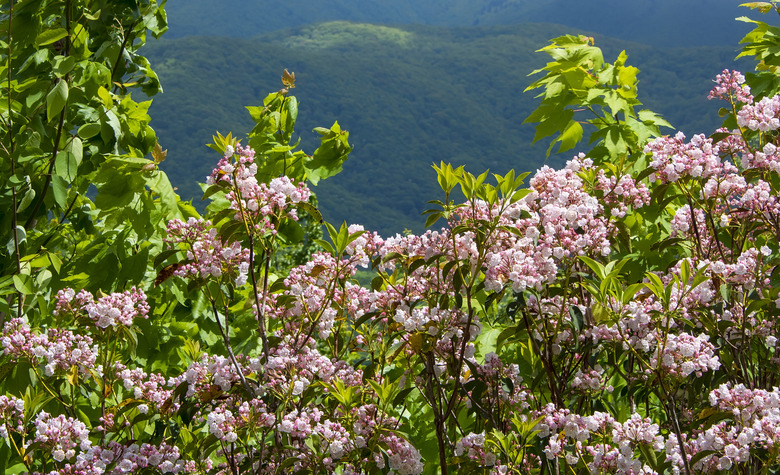When To Prune Mountain Laurel
We may receive a commission on purchases made from links.
Mountain laurel (Kalmia latifolia) is a showy, evergreen, shade-tolerant shrub that flowers from late spring to early summer. Mountain laurel is a perennial in U.S. Department of Agriculture hardiness zones 4 through 9. This shrub has a mounded look when young, but it tends to grow leggy branches as it ages. It isn't necessary to prune a mountain laurel, but it does promote good air circulation.
Pruning Mountain Laurel
Pruning Mountain Laurel
Prune your mountain laurel in the winter or during dry periods in summer. Mountain laurel has few problems with pests and diseases, but it can develop leaf spot during humid months if grown in heavy shade. It's best to prune mountain laurel in summer after the blooms have faded.
Pruning it in summer promotes better blooms in the next growing season. Use loppers to prune the large branches and hand clippers for the smaller branches, making a sharp cut at the base of the branch. Prune branches that are broken or growing too close together. Prune inner branches to improve air circulation and prune older branches that aren't producing many flowers.
Prune just enough to allow air to easily penetrate the branch structure. There's no reason to prune more, although you can prune it to 2 or 3 feet off the ground if your plant is diseased. It will take a couple of years to grow back, but this should give you a nice, full shrub. Mountain laurel is flammable, so you want to keep trim any mountain laurel shrubs growing near your house.
Growing Mountain Laurel
Growing Mountain Laurel
Mountain laurel grows wild along the entire Appalachian Mountain range and can grow as high and wide as 12 feet. Mountain laurel features pinkish-white blooms in May or June depending on where you live. Flowers grow in 4- to 6-inch clusters and are white with a tinge of pink. The deep-green leaves are 2 to 5 inches long and up to 1 1/2 inches wide. These glossy leaves serve as a nice frame for the showy flowers.
The branches grow in an irregular fashion, which gives the shrub a twisted look. Mountain laurel is closely related to azaleas and rhododendrons and is a member of the heath or heather family (Ericaceae). Its native habitat is moist, well-draining, acidic soil. Although it will grow in deep shade, it prefers moderate to partial shade and will flower best in these conditions. Make sure the plant is protected from winter winds.
Pinch off spent flowers to promote more energy for blooms that will emerge in the following year. Regular deadheading also helps prevent the branches from becoming too leggy.
Caring for Mountain Laurel
Caring for Mountain Laurel
If you provide your mountain laurel with regular care, you won't need to prune it as often. Mountain laurel has shallow roots, so apply mulch around the base. Mountain laurel prefers acidic soil with a pH of 4.5 to 5.5 and lots of organic matter, so add compost.
It's a good idea to fertilize your mountain laurel as well. Use an acidic, organic fertilizer that is meant for plants like laurel and rhododendron. Fertilize once in the early spring before the plant produces flowers. Then, fertilize again as soon as flowering is finished. Fertilize one final time a month later but do not fertilize after late July because that could stimulate new growth before winter.
Water your mountain laurel, especially during dry periods. Mountain laurel can be somewhat drought tolerant, but hot, dry periods will stress the plant, so water it regularly during summer dry spells. There are more than 80 cultivars of mountain laurel from which to choose, from dwarf to large sizes and with blooms that range from white to deep pink.
